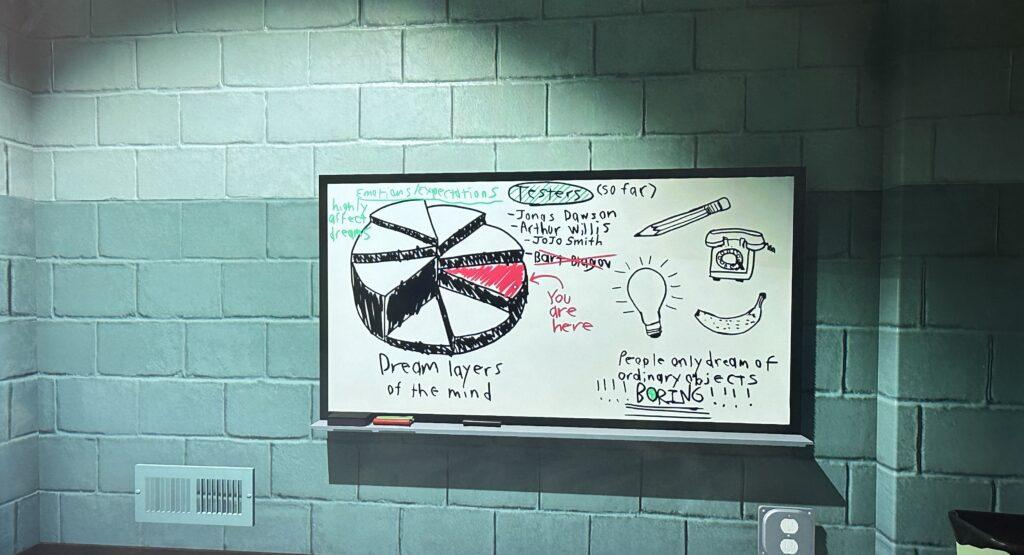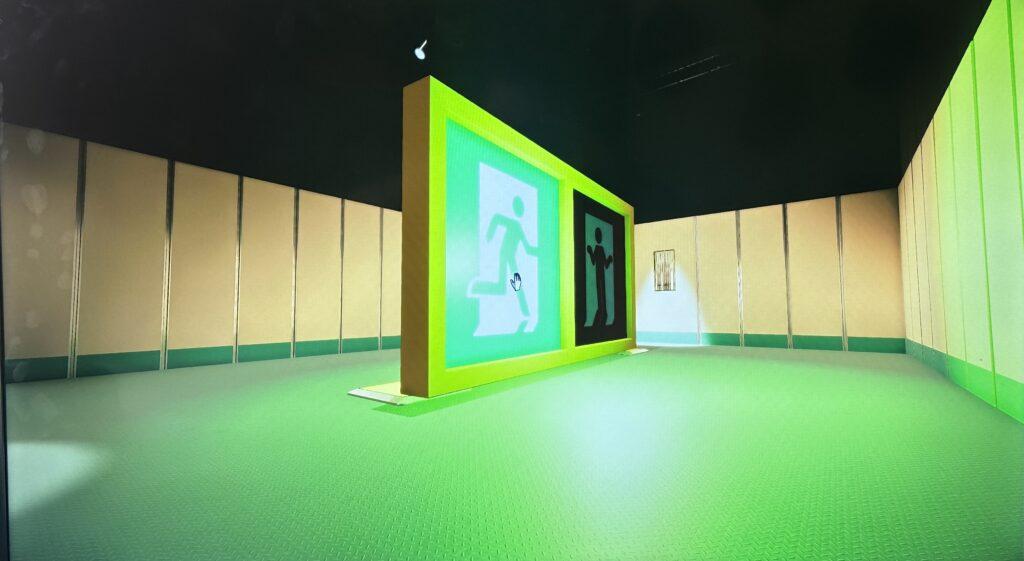For this critical play, I played Superliminal, developed by Pillow Castle and designed by Albert Shih and Logan Fieth. This is a first-person walking simulator and puzzle game, and the target audience would be puzzle game enthusiasts and those looking for a unique puzzle experience. The game is available on Switch, Playstation, Xbox, and PC, and I played on Playstation.
Superliminal’s puzzle mechanics influence the experience of the game by intertwining the dream state with the player’s perception, encouraging exploration and out-of-the-box thinking, and gradually introducing increasingly complex interactions.
To begin, Superliminal only has a few controls: walk, grab, and rotate. With these three simple controls, the user is subjected to room after room that all have various absurd scenarios. To begin, the user uses their perception to make objects bigger and smaller to escape rooms, but as the game progresses the game continually makes use of perception to create objects out of thin air, navigate corridors using light and shape, and make use of seemingly trivial objects to crack open a room. The core mechanic of using perception and location to solve rooms is exactly what gives the game its feel and further reinforces the trace that the player is trying to escape. This taps into an experience that virtually every player has had, namely the experience of moving around a dream where nothing seems to make sense. The developers perfectly capture this experience and use it to their advantage, twisting and turning the same mechanic in different ways to make it fresh, but the same, in every room.

In addition, it is this dream-like environment that allows the developers to make use of out-of-the-box nonsensical thinking. Since we are operating in a dream where nothing makes sense, the only thing that does make sense is to do something crazy. My personal favorite level was early on in the game, where there was nothing but a room and two buttons. It took me forever to realize that the exit sign was a playable object and was to be used to press both buttons at the same time. It is this mind-bending reasoning that makes the game so exciting and surprising which further draws the user in, thinking that anything can happen.

Finally, the developers have the perfect pacing to lure users into this dream world without overwhelming them. If I was to be dropped right into the level where you have to use a sign to climb up then use it as a bridge after, I would be too frustrated and quit the game. However, by gradually increasing the complexity of the perception mechanic, it felt like I was building my puzzle toolkit, and I gained confidence to try new things as the levels progressed. This also provided the developers with the perfect opportunity to surprise the player with slightly wacky mechanics (like exploding dice and infinite rooms) without me, as the player, feeling tricked or shortchanged.
Overall, Superliminal makes excellent use of the core perception mechanic in order to reinforce a dream world where you are to solve an increasingly complex set of puzzles by any means necessary. I’m excited to keep playing the game to see just how absurd the puzzles can become.


